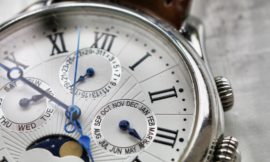Few diamond shoppers can walk into a high-end jewelry store and buy a 5-carat, D color, Internally Flawless diamond with Ideal cut parameters. If you are like most diamond shoppers, you have a limited budget. However, you still want to get the biggest and most beautiful diamond within your budget. You can take some simple steps that will ensure you get the biggest diamond possible.
1) Diamonds have price per carat increases at the most popular carat weights (0.50, 1.00, 1.25, 1.50, 2.00, etc.) because that is what shoppers request when they go into a jewelry store. Your dollars can go further by buying a diamond that has a carat weight just under those weights. For example, a diamond that weighs 0.90 carats can be the same millimeter diameter as a diamond weighing 1.00 carat but cost $1000 less.
2) The price of diamonds is extremely sensitive to color grade, yet most shoppers have a challenging time seeing the difference between some of the color grades. If you buy the lowest color grade that looks beautiful to your eyes, the lower price per carat allows you to buy a bigger diamond with your dollars. The highest color grades (D, E, and F) are categorized as “colorless.” The next color grades (G, H, I, and J) are “near-colorless” and the source of beautiful diamonds at much lower prices.
3) A ring with several smaller diamonds is less expensive than a single diamond with the same total carat weight. For example, three 0.50-carat diamonds will cost a fraction of a single diamond weighing 1.50 carats. The same holds true for a 1.0-carat center stone with 0.25-carat diamonds on each side. If you want a finger full of diamonds with a limited budget, consider several diamonds rather than a solitaire.
4) All diamonds have inclusions; the key is what you can see with your eye. Once a diamond is clean to the eye (VS2 or good SI1 for brilliant-cut shapes), higher clarity grades have no impact on the beauty or appearance of a diamond, they only add to the expense. Getting the lowest clarity grade, you are comfortable with and saving a lot of money will make no sacrifice in beauty.
5) The shape of the diamond can affect the millimeter size. Of course, you should always get the diamond shape you like best, but some shapes do look larger than other shapes. Ovals, marquises, and pear-shaped diamonds look larger than round or square diamonds with the same carat weight.
6) Even diamonds with the same shape and carat weight can be assorted sizes. The cut of the diamond can influence the millimeter size. Shallower diamonds tend to be bigger in length and width than deeper diamonds. It is like two men each weighing 200 pounds, where the smaller waistline results in a taller man.
7) The type of setting you select to hold your diamond can influence the diamond’s perceived size as well as affect the dollars you have to spend on the diamond. White gold settings cost about one-third of platinum settings, leaving more money for your diamond. Bezel-set diamonds or diamonds with paving around the center stone can make the diamond appear bigger.




